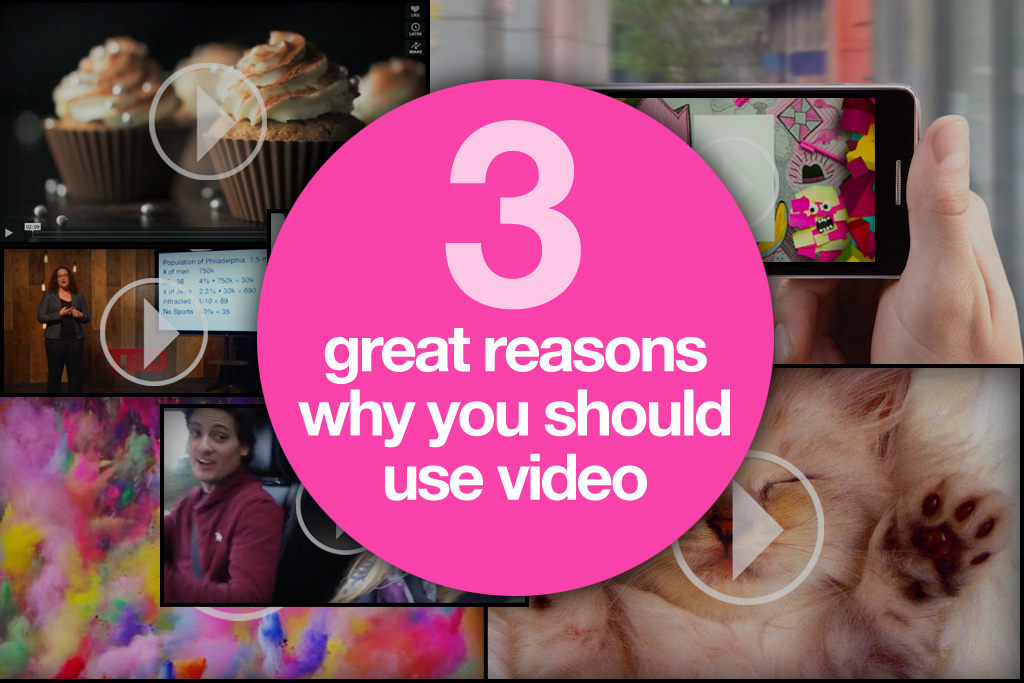How to automate your marketing so you spend LESS time and get MORE sales
Find out how you can automate and systemise parts of your marketing, so you can spend less time on it – and get more sales!
As a small business owner or freelancer you have a finite amount of time and energy… and a never-ending list of tasks that demand your attention. So how can you work smartly so you maximise your results, while minimising the amount of time and effort you need to spend on tasks? The answer is to automate as much as possible.
But what does ‘automate’ really mean? In simple terms it involves finding technology and establishing systems that do much of the work for you. Once you have set them up you can let them get on with their job, while you do yours.
Four ways you can use marketing technology and systems to work smarter
In this article we explore how you can automate your marketing, so you can spend less time on it, and get more sales and brand awareness from it. So here are four important ways you can use technology and clever systems to work smarter.
1) Identify the technology that can help you
There’s a wealth of technology that can help you work smarter and automate your marketing today, some free and some paid for. Here’s a quick run down of some the smart tech we recommend looking at.
Lead generation software
At the top of your sales funnel or marketing journey, you need a steady stream of new customers finding out about you and (ideally) joining your mailing list so you can build your relationship with them and nurture them to a sale. If you have a website we recommend setting up software that offers them some kind of lead magnet (eg a free checklist or guide) in return for their email address. Convert Pro is an example of this technology.
Social media scheduling software
In order to reach new people and build ongoing relationships with people who are already aware of and like the sound of what you do, you need a consistent social media presence.
But you don’t have the time to be posting on social media constantly – and luckily you don’t need to! Use social media scheduling software (such as Hootsuite) to post for you, and you can reserve the time you do have for social media for engaging. We recommend having a monthly or weekly scheduling session and booking all your posts in one go.
Email marketing software
Once people join your mailing list you should be emailing them regularly to help build your relationship, remain front of mind with them, and let them know what they can buy from you and how, when the time is right for them. And to manage your mailing list and send out emails you need emailing marketing software, like Drip.
We recommend using email marketing automation to send out:
- A short welcome email sequence to people who join your list
- Regular newsletters to your list
- Sales emails/campaigns to warm prospects
- Thank you emails to people who buy from you
- Lead magnet emails to people who join your list
Analytics software
If you have a website, social media or send emails then it’s important to track results. By understanding what worked (and what didn’t) you can begin to understand what kind of messages and media works for your business and audience, and do more of what works, and less of what doesn’t.
We use Google Analytics to work out where our website traffic comes from, how people are interacting with our website, and what content ranks well for SEO (and what people like reading). Early on Google Analytics enabled us to identity the type of content that worked best, saving us time creating content and writing headlines that our audience didn’t want or would respond to.
We also use social media insights from each of our platforms to see what social content works best, and the insights from the social media scheduling tools we use. And we track open rates, click throughs and sales from marketing emails. We also record days of the week and times we send out emails to look for patterns in results.
Project management software
If you work with other people it’s worth looking at project management software like Asana or Trello. This will help ensure that everyone knows what they need to be working on, and can coordinate progress. It also gives you one place to manage all your interactions and briefs.
You can schedule work, assign it and attach all necessary files. If the person you assigned it to has questions they can ask them via the project management platform, and they can let you know when tasks are complete and share the work or links to it. You can also use the platform calendar to manage your workload and ensure you work on the most urgent tasks first.
2) Automate your sales process
Depending on what you do or sell, there will be software that will automate processes and enable you to sell (and even deliver) without requiring you to physically be involved in the process. Here’s an example of how we use software to automate selling our courses:
- Our online courses are built on Thinkific. Thinkific handles the sign ups, sales and delivers the course content.
- We use Leadpages to build our course sales pages (we can do this on Thinkific, but Leadpages gives us more design options). When you click a button to buy on Leadpages it sends you to the Thinkific sign up page.
- Thinkific is connected to PayPal and Stripe who physically take payments.
- When you buy a course, it triggers a ‘zap’ in Zapier that tells Drip, our email marketing software which course you have bought and places a ‘tag’ on your email address.
- This tag automatically triggers an email to be sent to you thanking you for your purchase and giving you any information you need to start the course.
And if we need to gather information from course participants, for example to find the best time for Q&A calls, we create a Google Form which automatically sends responses to a spreadsheet.
So once we have built a course, created the sales page and written emails (both sales emails, which are automated using Drip, and thank you emails), we don’t need to have any more involvement in a marketing campaign. The emails go out, sales come in and people start courses without us needing to do any more work.
Now you may not sell online courses, but you too can create a process like this to automate as much of your marketing and sales process as you can, so you don’t need to physically get involved when sales come in. If you are an e-commerce business you can even automate your abandoned cart sequence so you don’t miss out on sales.
It was finding ways to automate her business that enabled Amanda Overend to triple her profits in a few weeks. In Amanda’s case she outsourced the fulfilment of her orders, which gave more more time to work on sales and marketing. She’s since outsourced even more tasks, enabling her to spend more time on research and development too, ensuring her business remains competitive and a market leader in innovation and product selection.
3) Have regular ‘harvesting’ sessions
Another way to save time on your marketing is to leverage the state of flow. When we first started posting regularly on Twitter and Facebook I’d spend maybe half an hour each day finding an article to share and writing posts for each platform. But I eventually realised there was a smarter way to do this.
Over time I identified the websites that had content our social media followers enjoyed reading. So once a month I’d go through these sites and find 30 articles I could share. I’d then add the link and a short description to a spreadsheet and upload it to the social media scheduling tool we used (initially Hootsuite and then Social Jukebox).
As I was doing it in one go it only took me around two hours to find, write and schedule a month’s worth of content – thanks to the state of flow. It was also easier as I had all the tabs and spreadsheets open. So rather than spending 15 hours a month writing daily posts, I’d spend just two hours.
This also freed me up to spend quality time each day engaging on social media. The combination of this live engagement and consistent quality content sharing helped grow our following fast. And as a result, our Twitter following grew by over 40,000 in four years.
4) Create a bank of branded images
Another marketing task that can take time – but is important for brand building – is to find and/or create quality images that reflect your brand. And again, this is a task that can be made simpler and quicker with some clever systemising.
First of all, you need to decide on your brand colour palette, to ensure that all your images look like they’ve come from the same business or person and build your brand equity. If you don’t already have a brand colour palette or the budget to pay for one (a brand designer will be able to create this for you), you can create one for free using tools like this.
Once you have your colour palette you can use free image creating tools like Canva to design a template for social media posts. This can be as simple as a plain coloured background or image, with text over it. If you have a range of colours in your palette you can do a template for each.
Then you can use this template to create images for social media posts and sales pages. I do this for our sales pages, using a picture of me with a quote over it. It takes me a few seconds to edit the text and download the image for a new sales page.

You don’t need a designer to do this for you; it’s something that anyone can do, even if, like me, you don’t have any tech skills!
As an aside, if you feature in your marketing it’s worth having a ‘photo harvesting session’ too. If you have the budget it’s absolutely worth investing in a professional photo shoot (like we did here with Rosie Parsons). But even if you can’t yet afford to pay a professional, we recommend getting a friend to take a bank of photos of you that you can use in your marketing. It’s fine to take them on your mobile phone, as long as you use high resolution versions of the images.
If you need other images for your marketing (social media posts or blogs on your site perhaps) you can also leverage the state of flow by having monthly ‘harvesting’ sessions on free stock image sites like Unsplash. Find the images you want, rename and resize them (if you’re uploading to your website you won’t want images to be too large for SEO reasons), then add them to a Google Drive folder. This way they’ll all be ready for you when you need them.
How many hours a week can you save on your marketing?
We hope you’ve found this article inspiring and are excited about finding ways to save time on your marketing – and grow your sales. Every hour you save on an unnecessary task is an hour you can spend adding more value to your business and growing it further.
So think about what you can change in your business. Ask yourself:
- What tasks I am doing manually now could be done by software?
- What systems can I set up to streamline my business and save me time?
- What can software do faster/better than me?
- What tasks do I hate, and could be outsourced to a person or software, freeing me up to add value in other areas?
If you need to spend money on automating or outsourcing a task, we recommend ensuring that the time you save is consciously used to bring greater value to your business, and isn’t simply squandered on essential admin.
For example, if you hire someone to schedule your social media posts, or invest in software to do it, make sure you use the time you save on actions that will bring in at least the amount of money you have spent. Mark this time in your diary or calendar and decide what actions you going to take in that precious time you have earned back.
Use our free marketing automation spreadsheet to save time
To help you find ways you can save time and do more marketing we’ve created a simple spreadsheet for you here. To get your own Google Sheet version you can edit, just click File and then Make a copy from the drop down menu. If you prefer to use Excel or other spreadsheet, click File and Download from the drop down menu and choose your format.

Here’s how to use the sheet:
- In Task write down the task you want to automate or systemise
- Next calculate how many hours you spend on this task a month
- Then research potential software options for automating all or part of this task
- Next think of ways you can systemise the task to save time
- In Cost calculate how much it will cost you to set this up (for software or outsourcing, for example)
- Next calculate how many hours a month you will save
- Finally identify what you will do with the time you save – how you will grow the business or make money
Spend an hour or two brainstorming all the tasks you do and potential ways you can automate or streamline them, and make a decision on what you will action, and when.
And remember the golden rule of saving time in your business: you MUST replace that time with an action that will either grow your business or bring more money into it. Do this and you’ll save time on your marketing AND get more sales.
Love more help with your marketing? Find out how you can launch a brilliant marketing plan in just eight weeks with our online course Marketing The Easy Way.
Photo by bruce mars










